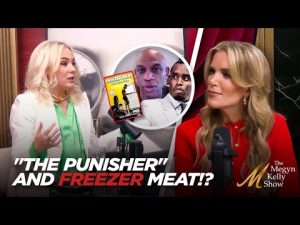In the latest showdown over tariffs and trade, President Trump’s row with Apple has grabbed the spotlight, leaving one to wonder if Tim Cook is quietly chuckling while tuning his iPhone’s reminder to “call the President during dinner.” It appears that President Trump feels a twinge of betrayal, like when a friend makes plans without you but posts about it all over social media. Trump has expressed frustration about Apple’s decision to keep its manufacturing operations overseas, particularly in China and India, rather than in the United States. He’s thinking, if they can get the job done overseas, surely they can bring their technology wizardry stateside. And if they don’t? Well, tariffs might just become the new iOS update nobody actually asked for.
The President’s push for Apple to consider U.S. manufacturing comes with an interesting twist. The idea here is, if you want to sell on American soil without facing hefty tariffs, you should build on American soil. The logic is as simple as a recipe for apple pie—support local businesses and create jobs by building right here. It’s a sentiment that resonates with many who feel industries have too readily outsourced jobs for the allure of cheaper labor abroad. So, the stakes are set. Apple can default to the status quo and face increased costs, or they can embrace a domestic solution, albeit at a potentially higher cost upfront.
Switching gears to the European Union, the President’s approach to tariffs is much like a stern teacher handing out detention slips to a rowdy class. “Shape up or face a 50% tariff” is the message sent across the Atlantic. The EU, with its intricate web of trade regulations and tariffs, seems like a maze designed to keep outsiders at bay. President Trump’s demand is straightforward: unravel the trade barriers, open the doors to U.S. goods, or brace for tariffs that will make crossing the Atlantic look like the better option.
Negotiating with the EU is akin to herding cats, considering the dizzying array of member states each with their own agenda. The challenge here lies in getting all the European nations to sing in harmony rather than disharmonious solos. Trump’s offer is clear: make a deal that’s palatable, and the tariff clouds will part. If, however, European manufacturers grow weary of waiting for Brussels to untangle itself, they might find solace in relocating their production to America’s welcoming shores, where tariffs are more a threat than a reality.
In sum, Trump’s tariff strategy serves as a forceful nudge, encouraging American companies to commit to local manufacturing and pressing the EU to play fair. It’s a bold move that speaks to a commitment to leveling the playing field for American businesses. The President’s stance is unyielding—build in America, export with ease, pay less in tariffs, and ensure that the red, white, and blue fabric of economic patriotism is woven tightly with jobs, innovation, and growth right here at home.







